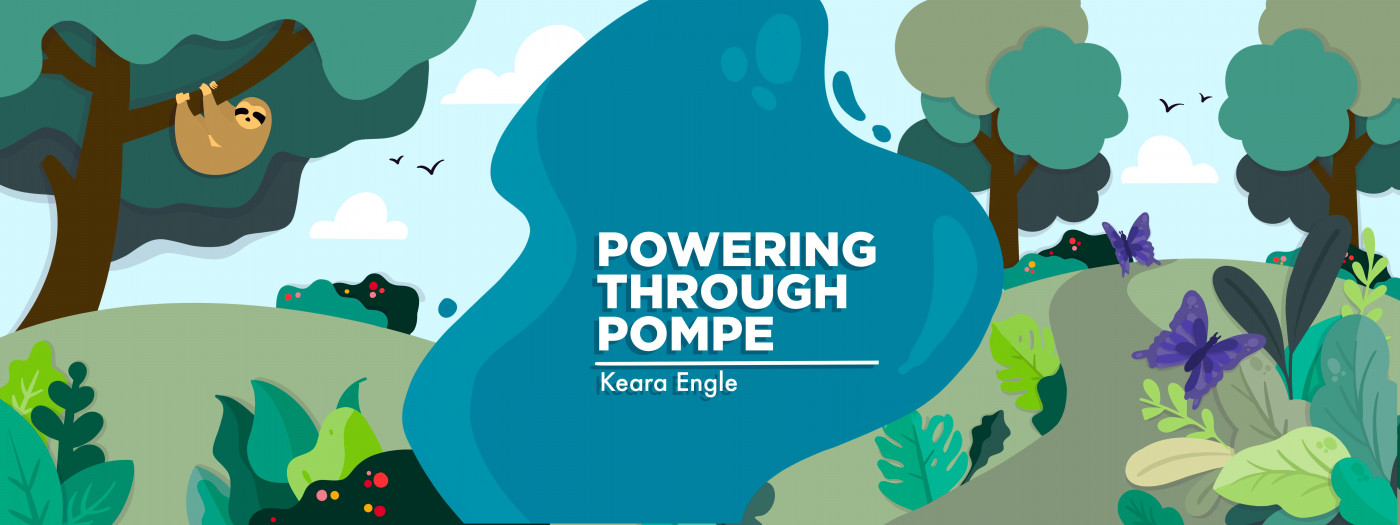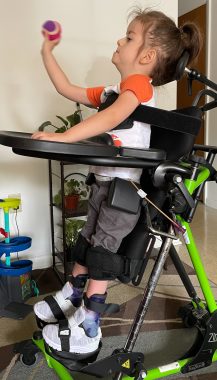Toddlers Can Experience Chronic Pain, Too
Written by |

Recently, I reached out to some other moms in our Pompe family to ask about a concern I’ve had for a while. I’ve noticed my 4-year-old son, Cayden, is complaining of pain more than ever. It’s mainly in his legs, but I assume he gets aches and pains elsewhere.
I know that chronic pain can be a symptom of Pompe disease, as I’ve seen some adults discussing the issue in Facebook support groups. However, I wasn’t expecting my son to deal with it at such a young age.
Cayden was unable to speak for a long time, which made it hard for me to understand how he was feeling. But now, he’s using his voice to speak more and can indicate clearly what’s wrong. Every morning when he wakes up, he points to his knees and tells me they hurt. He expresses that his hips hurt from time to time as well.
Because his complaints are becoming more frequent, I decided to see if other children with Pompe disease are dealing with chronic pain. To no surprise, many moms I messaged said this wasn’t uncommon for their kids. Hearing this brought some relief, but it also makes me sad to know that our children have to deal with chronic pain on top of the other hardships of this rare disease.
Most of the pain stems from muscles becoming weak and tight. Having weak muscles is one of the main symptoms of Pompe disease. Cayden has never been able to walk or stand up on his own. This has caused him to develop extreme tightness throughout his legs, to the point where he can’t extend them completely straight.
He has a stander that helps straighten and stretch his legs. However, it’s very painful for him to use it for an extended period of time. Most times, he screams and cries when we place him in the stander, and he usually only lasts about 30 minutes before begging to get out. As his mother, this breaks my heart to see.

Cayden in his stander during physical therapy. (Photo by Keara Engle)
Cayden had bilateral hip flexor release surgery in November 2020 to help with the tightness in his hips. While it did help a great deal, recovery was an extremely lengthy and painful process. He was required to either lie on his stomach or go in his stander for six hours every day, for a total of six weeks.
The surgery was worth it, in my opinion, but his hips reverted back to how they were before because he was hospitalized a lot last year. During the hospitalizations, his leg stretches were the least of our worries, given everything else that was going on. He was also unable to be in his stander or receive much physical therapy because of the circumstances.
I try to rub and massage Cayden’s legs when he complains about the pain, but no amount of massaging can make the pain go away completely. Stretching helps a bit, too, but it’s not very comfortable for him.
Seeing your child in pain is never easy, no matter how young or old they are. That’s your baby and you just want them to be comfortable at all times. The new problem of chronic pain has been a hard reality for me to face as a mother. I wish I could take his pain away, but sadly, that’s just not possible.
Note: Pompe Disease News is strictly a news and information website about the disease. It does not provide medical advice, diagnosis, or treatment. This content is not intended to be a substitute for professional medical advice, diagnosis, or treatment. Always seek the advice of your physician or other qualified health provider with any questions you may have regarding a medical condition. Never disregard professional medical advice or delay in seeking it because of something you have read on this website. The opinions expressed in this column are not those of Pompe Disease News or its parent company, Bionews, and are intended to spark discussion about issues pertaining to Pompe disease.







brian.white
Hi Keara. For what it's worth, the first 15 years after I was diagnosed with Pompe Disease I did not feel any pain. My muscles were definitely weak but I didn't feel pain like others were reporting. However, the last 2 years, as the muscles continue to degrade, I definitely am feeling pain now. The one thing that I try to do is not stay in 1 position for too long. That seems to help. Also, drinking a lot of water seems to help. Not sure why. It breaks my heart to read about your boy but you're doing an amazing job raising him.